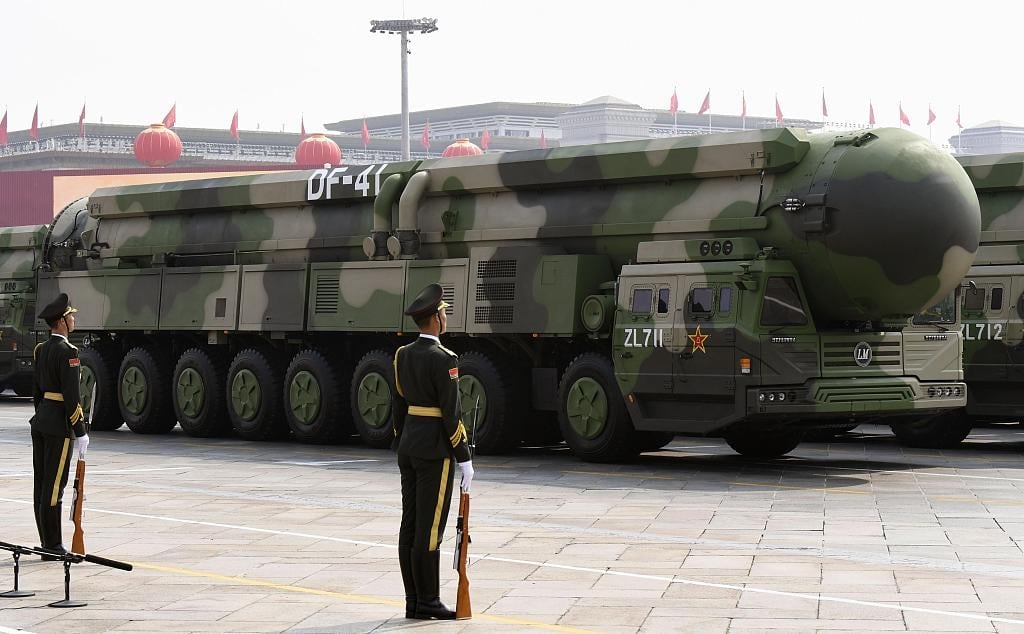
The expanding conventional and nuclear weapon arsenals of China and Russia must be taken into account in laying out the United States’ future strategic posture, the Senate Armed Services Committee was told Thursday.
Madelyn Creedon, chairwoman of the Congressional Commission on Strategic Posture, used the threat posed by “coercive” or “bullying strikes” by cruise and hypersonic missiles targeting specific infrastructure in the Indo-Pacific as an example of how China could try to “keep the United States out” of a crisis.
Creedon said these new threats against specific points – rather than large areas – underscore the need to integrate air and missile defense, not only by the United States, but with allies and partners as well.
Former Sen. Jon Kyl, commission vice chair, added that Russia’s threats to use limited nuclear weapons in Ukraine highlight how such threats could be used to force the United States to “buckle” to Kremlin demands. The idea that China and Russia would use these weapons is a demonstration that “there’s a lot more where that comes from, so stay away,” he said.
The current bipartisan commission report termed the nuclear threat from two adversaries simultaneously “unprecedented.”
Kyl added that space, cyber and electro-magnetic warfare threats also were domains and means that Beijing and Moscow could employ during a conflict. Several times during the open session, he mentioned that China and Russia did not have to act in concert to pose the threat of a two-theater war. One nation could be “opportunistic” in exploiting a conflict thousands of miles away.
Both told the committee that future deterrence relies first on modernizing the nuclear triad and re-looking the posture of the nation’s conventional military forces. At the hearing, Creedon included machine learning, artificial intelligence advances and additive manufacturing as areas in which conventional forces would need to modernize, looking toward 2035. They added that Beijing and Moscow’s long-term world-order and stability goals in Europe and the Indo-Pacific are antithetical to Washington and its allies and partners.
Creedon said the original congressional commission 15 years ago “did not see” the possibility of confronting two nuclear powers simultaneously – and in a number of different ways. In her prepared opening statement, she said the danger of nuclear warfare is further complicated by North Korea’s continued missile and weapon development and the reality that rivals India and Pakistan are nuclear powers.
“The doomsday clock tool is now set at 100 seconds to midnight; in contrast, in 1991 at the end of the Cold War the clock setting was 17 minutes to midnight,” Creedon wrote in her statement.
The most significant strategic change the United States faces, said Sen. Jack Reed, (D-R.I.) and committee chairman, is that Washington may China and Russia in a conflict at the same time. In addition, he said there is an increased possibility of “limited nuclear war” as Moscow has threatened in Europe. Reed also said the effect of “long-range strike and other non-nuclear systems” that can be brought to bear in a crisis require new means of deterrence.
“We’re not even where we need to be” in meeting the threat China’s continuing naval build-up poses in the Indo-Pacific, ranking member Sen. Roger Wicker (R-Miss.), added. At the hearing, and when the commission’s report was released last week, Wicker praised the panel for its recommendation to add a third shipyard capable of building-nuclear-powered warships.
He added on Thursday that without that additional capacity, the Australia-United Kingdom-United States agreement (AUKU)] for Canberra to build a nuclear-powered submarine fleet was in danger of not “getting off the ground.”
Creedon said the United States should realize that legacy systems will remain in the arsenal and need to be maintained. She added that Congress and future administrations should “assume new systems will be late and over budget,” but are necessary. Investments being made now and later in improving supply-chain delivery and basic national security and defense industrial base infrastructure “will be needed in perpetuity,” she stated. Creedon said attention to detail also applies to the workforce.
As a former senator, Kyl said that after allowing the nuclear triad and laboratories to atrophy for decades, catching up will cost money. He put nuclear modernization costs in the Pentagon and Department of Energy at about 5% of their budgets and affordable when put against the nation’s gross domestic product.
Like Creedon, he sees meeting the aggressive delivery schedules of systems such as the Columbia-class ballistic-missile submarines “will be extremely difficult.” Congress, administrations and the public “will have to address gaps in deterrence.”
In both prepared testimony and in answers to questions, Creedon added, “Until the hand-off from old to new is finished, maintaining the current systems is essential and must be funded adequately. We shouldn’t underestimate how hard this hand-off will be – placing significant demands on people and handling and support equipment.”
“Changes have to be made now,” Kyl said, to keep pace with China’s expanding nuclear arsenal and Russia’s almost completed nuclear weapon modernization program. He added that estimates of Beijing’s operational nuclear warheads have increased from 400 to 500, far faster than predicted. Creedon’s prepared statement estimated China could have more than 1,000 operational warheads by 2030.
China “makes no bones about its ultimate goals” of nuclear parity with the United States, Kyl said.
Creedon said the commission intentionally declined “to pick winners and losers” among possible systems, including the Submarine-Launched Cruise Missile-Nuclear [SLCM-N]. That program is on hold in administration budget plans but endorsed by many senior uniformed officers in congressional testimony in recent years as an option to limit nuclear war.
When asked whether the program met the panel’s definition of necessary deterrence, Kyl said, “the answer is yes” to the requirements specified, largely because it would “be needed to give the president the greatest number of options” to control escalation in a crisis.





